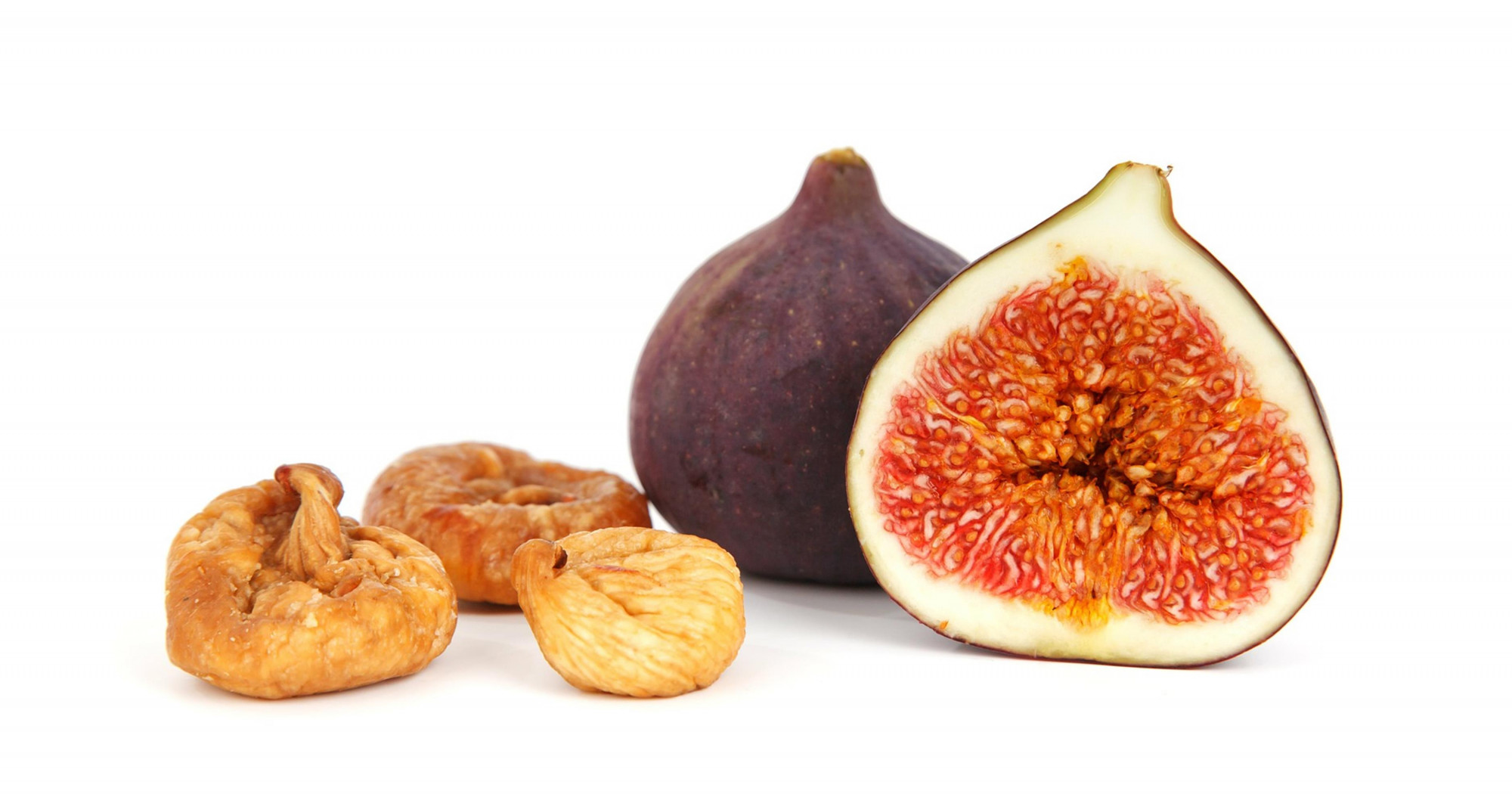Figs

Fig trees are native to the Middle East but for centuries, they have been cultivated in the Mediterranean, North Africa, Asia and North America. Once harvested, fresh figs, keep only for about a week, which is why most are sold dried. And dried figs, apart from being a convenient sweet snack, are packed with nutrients.
It’s recommended we get at least 30g of fibre a day and just three dried figs provide 2.7g (and this includes both types of fibre – soluble and insoluble. Soluble fibre helps to make you feel fuller for longer and promotes healthy blood sugar and cholesterol levels, whilst insoluble fibre helps to keep your digestive system healthy and prevents constipation.
Dried figs are sweet because they contain natural sugars but as these come in a package with fibre and other nutrients, the sugars are digested more slowly and ensure a sustained energy release. Figs contain almost no fat but can contribute nicely to your daily intake of protein, vitamin K, several B vitamins, calcium, iron, magnesium, potassium, zinc, copper and manganese. These are all essential nutrients that your body needs and figs are an excellent natural source.
By eating six dried figs, you get 13 per cent of your recommended calcium intake, 17 per cent of iron (8.5 per cent for menstruating women) and 12 per cent of vitamin K, which ensures healthy blood clotting. You also get 12 per cent of the recommended potassium intake, that helps keep fluids and minerals balanced in and around cells, a good dose of magnesium, which is essential for healthy muscle and nerve function, as well as copper – a key component of many molecules. All in all, figs are great!
Dried figs are an excellent snack food or ingredient for many sweet treats but do you know what to look for to get the best quality and taste? First, the ingredients list should say figs and nothing else – no added chemicals or sugars. Colour is important, too, and should be light beige to medium brown on the outside and nice warm brown on the inside. Beware of figs that are very dark or almost black – a dark colour means rotten flesh, bug infestation or mould. If it’s just slightly darker colour, it can be natural colouring but never eat any black bits!
When it comes to dried figs, size matters – smaller figs are often better and you get fewer bad ones in the pack. And of course, whenever possible, go for organic.
Extra tip: Fresh figs are delicious and healthy and you can use them as jam substitute in raw food diets – just scoop out the flesh and spread on whatever takes your fancy!




